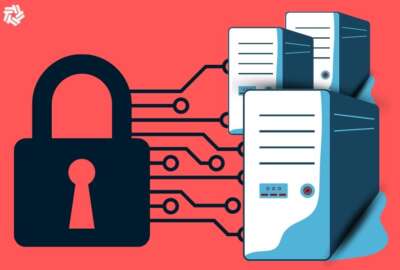Insight by Adobe
‘Digital first’ in CX doesn’t mean digital only. Why agencies need an omnichannel strategy
Adobe’s Nancy Newell and Brian Chidester say an omnichannel customer experience strategy is about meeting customers where they are.
Federal agencies got a wake-up call at the height of the COVID-19 pandemic, when it drove up demand for online services.
That spike in traffic underscored the need for agencies to step up the quality of their digital offerings. The Office of Management and Budget, in September 2023, issued new guidance calling for a “digital-first” customer experience across government.
But a “digital-first” delivery model doesn’t mean digital-only.
Brian Chidester, the head of industry strategy for public sector at Adobe, said agencies are now “right-sizing around experiences,” and focused on delivering an omnichannel experience.
“Everything did go digital-first or digital-only for a period of time, and now they’re shifting back, because the government has a responsibility. It’s not just something they want to do, but they have a responsibility to serve all, not just some, and all means complete, holistic omnichannel,” Chidester said.
“Seamless is really making it as easy as possible, however I want to engage. That’s ultimately where the government’s North Star is,” he added.
Nancy Newell, head of strategic alliances and marketing experiences for public sector at Adobe, said an omnichannel customer experience strategy focused on meeting customers where they are — and allowing them to contact agencies the way they prefer — in-person, over the phone, online and beyond is critical to building trust.
“We’ve all had discussions around digital transformation. But now it’s not just digital, — people don’t want just digital only,” Newell said. “We need to meet people where they are. Government agencies need to understand how people want to connect and engage with government services. Whether it’s at a kiosk, physical office, or online, people expect to have the same experience as in the commercial sector — and so the question is how does government achieve this?”
Customers expect agencies to provide the same omnichannel experience they’re used to with private-sector companies. But providing that level of customer experience means more complexity.
“As you get more complex around experiences, the level of citizen satisfaction generally goes down,” Chidester said. “Part of that is because interagency collaboration suffers in a lot of those things. What I’m excited about is Adobe’s ability to build that connective tissue around those experiences. You have IRL, you have digital, you have holistic omnichannel, which is what government not just wants to deliver, they must deliver.”
Meeting customers where they are
Providing an omnichannel experience gives customers an opportunity to seek help in the method that best suits their needs, and reduces the hurdles of successfully obtaining government services.
“We all have different preferences, and so you’ve need to meet people where they are,” Newell said. “For instance, my mom absolutely wants to walk in somewhere and talk to somebody in person. She will not fill online forms or respond to emails. Whereas I want it all on my phone, at my fingertips. And then you’ve got my kid, a digital native, where if it’s not online or through an app that is easily accessible and coming at him quickly, he isn’t even looking at it. You’ve got all these different personas with unique needs and varying digital literacy — so that’s why an omnichannel experience is important. They want it delivered to them in a way that they’re used to receiving information.”
Meeting people where they are is difficult for government agencies she added. “Because without the right data behind all this — it’s harder to personalize the experience effectively and efficiently and seamlessly — government agencies need to have access to the right behavioral data for this level of personalization to work.”
Chidester said agencies having a seamless, 360-degree of customer interactions depends on good, quality data and reducing the burden of customers signing up for services. Data management also reduces the burden of customers repeatedly filling out the forms and providing the same information to agencies over and over again.
“Satisfaction goes down if my information doesn’t always go with me. If I engage with the IRS, because I have to do something, and then I go to the State Department to execute on something, most of the time, my information isn’t carried over, because those agencies aren’t integrated. They’re not connecting in a way that’s meaningful,” he said.
“Optimizing each of those across that spectrum is what we’re looking to help government with. You need to be able to connect the dots, regardless of whether I give you my information on a clipboard, on a piece of paper. I expect all of that to go into some type of digital repository, and stay with me, so that the next interaction I have, even if it is a digital form, I don’t want to have to fill it out because I’ve already done it,” he added.
Agencies delivering an omnichannel experience
Delivering an omnichannel experience isn’t easy, but agencies — particularly High-Impact Service Providers — are stepping up and delivering.
The Education Department’s Federal Student Aid, for example, is working with the IRS on student loan repayment.
“They went from two different organizations where you’re paying on two different sites, and now they’re connected into one,” Newell said. “So when those loans are being repaid, it’s a joint effort.
Newell said the Federal Emergency Management Agency is working with state and local governments to provide a seamless response to helping households recover from disasters.
“I live in a hurricane zone and have personally been impacted by natural disasters. I now have a FEMA team, and I have a local team that interfaces with my insurance company. Because of this, I feel like the service I am receiving is personalizes and that makes me appreciate and trust the government experience.
Regardless of the mission, Newell said agencies delivering a better customer experience are also providing a better employee experience — giving their frontline employees the tools and technology they need to meet the needs of their customers.
When you empower somebody with the tools they need — they’re going to be more satisfied in what they’re able to deliver for that government agency,” she said. “They’re empowered to deliver it from their fingertips with the right digital tools. They’re going to want to work for the government and be a part of that team, because they feel good about what they’re doing for the citizens of this country. That’s so important.”
Discover more about how to elevate your customer experience in the “Excellent, equitable and secure customer experience: A closer look at high-impact service providers” series.
Copyright © 2024 Federal News Network. All rights reserved. This website is not intended for users located within the European Economic Area.
Jory Heckman is a reporter at Federal News Network covering U.S. Postal Service, IRS, big data and technology issues.
Follow @jheckmanWFED






